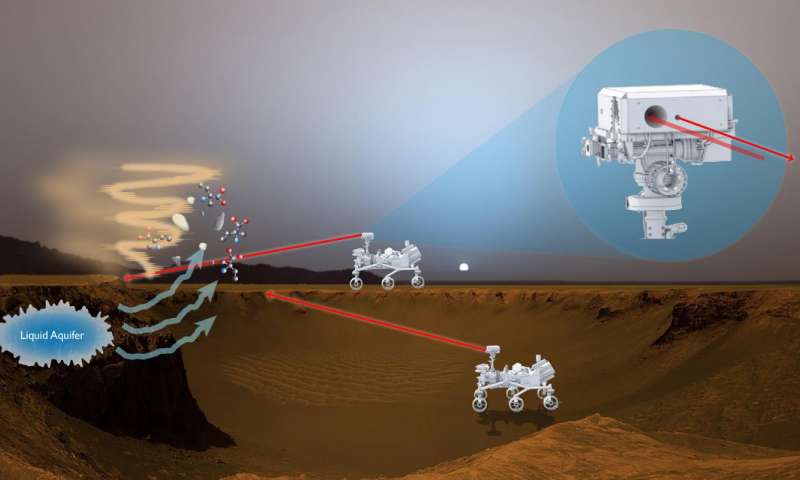One of the biggest concerns NASA scientists looking for alien life on Mars have is that they might one day find biological signatures — only to later find these were actually contaminants brought from Earth. An upgrade to a laser radar called LIDAR, typically used to monitor air quality or map large areas, could solve this concern and make investigations a lot more efficient, say NASA scientists.
A light nose
The instrument is called Bio-Indicator Lidar Instrument, or BILI. Branimir Blagojevic, now a NASA technologist at the Goddard Space Flight Center in Greenbelt, used to work for the company that first made the device. At NASA, Blagojevic used his experience and skills to turn the technology into a working prototype that shows that the same instruments used to monitor biohazards in public places could be effective at detecting organic biosignatures on Mars, too.
LIDAR is a remote sensing instrument that is very similar in working principle to radar. However, instead of radio waves, LIDAR uses light shone by lasers to measure distances from a target, but also determine the composition of particles in the air.
BILI is essentially a fluorescence-based lidar that can detect chemicals based on their fluorescent emissions. Fluorescence-based sensing instruments have been widely employed by NASA in its climate research, but soon the space agency will also use it in planetary studies. “If the agency develops it, it will be the first of a kind,” Blagojevic said.
Because it can detect small levels of complex molecules in real time from a distance of several hundred meters, BILI could serve as the nose of NASA’s next rover mission, planned for 2020. The instrument can be used to scan the bio-signatures in plumes above recurring slopes which are very challenging to travel for a rover. It could also be targeted on ground-level aerosols with no risk of sample contamination.
For now, Blagojevic envisions BILI positioned on a rover’s mast. Initially, the instrument first scans for dust plumes, then, once detected, the command is issued for two ultraviolet lasers to shine light pulses at the dust. The illumination causes the dust clouds to resonate or fluoresce. It’s then only a matter of analyzing this signal and comparing it with known signatures from a database to detect organic particles. The same analysis also reveals the particles’ size.
“If the bio-signatures are there, it could be detected in the dust,” Blagojevic said in a statement for the press.
“This makes our instrument an excellent complementary organic-detection instrument, which we could use in tandem with more sensitive, point sensor-type mass spectrometers that can only measure a small amount of material at once,” Blagojevic said. “BILI’s measurements do not require consumables other than electrical power and can be conducted quickly over a broad area. This is a survey instrument, with a nose for certain molecules.”
Why stop at a rover, though? Indeed, NASA has plans to mount BILI or a later version onto spacecraft. NASA could then significantly increase its odds of detecting biosignatures in the solar system.
Next for Blagojevic and colleagues is to refine their design. The goal is to make BILI smaller, more rugged, and more sensitive to a broad range of organic particles.










